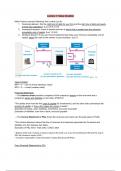Resume
Extensive AFM summary including all lectures + examples (grade: 7.5)
- Cours
- Établissement
This is an Extensive AFM summary including all lectures + useful/insightful examples (grade: 8.0). Course was given by Ceccarelli and Dijkstra at Vrije Universiteit.
[Montrer plus]



